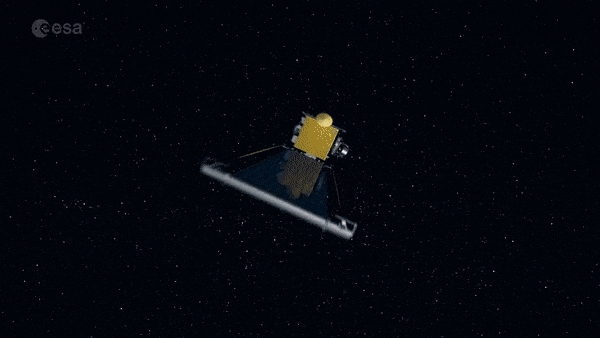
DART will collide with the smaller body of the Didymos binary asteroid system in September 2022, striking at a speed of around 6.6 km per second. While the Didymos asteroid system will maintain its motion around the Sun unperturbed, the collision is expected to shift the orbit of the 160-metre-diameter Dimorphos around its 780-metre-diameter parent Didymos in a small but distinct way – just a fraction of one per cent – sufficient to be measured with Earth-based telescopes and radar.
But observing from across space will still leave multiple unknowns, such as the precise mass of Dimorphos, its makeup and its internal structure – as well as the size and shape of the crater left by DART. So, in November 2024 Hera will head towards the Didymos system, commencing its detailed ‘crime scene investigation’ of the two asteroids in late 2026.
By gathering data close-up, Hera will help turn DART’s grand scale impact experiment into a well-understood and repeatable deflection technique – ready to be deployed if an asteroid should ever be spotted heading Earthward.



